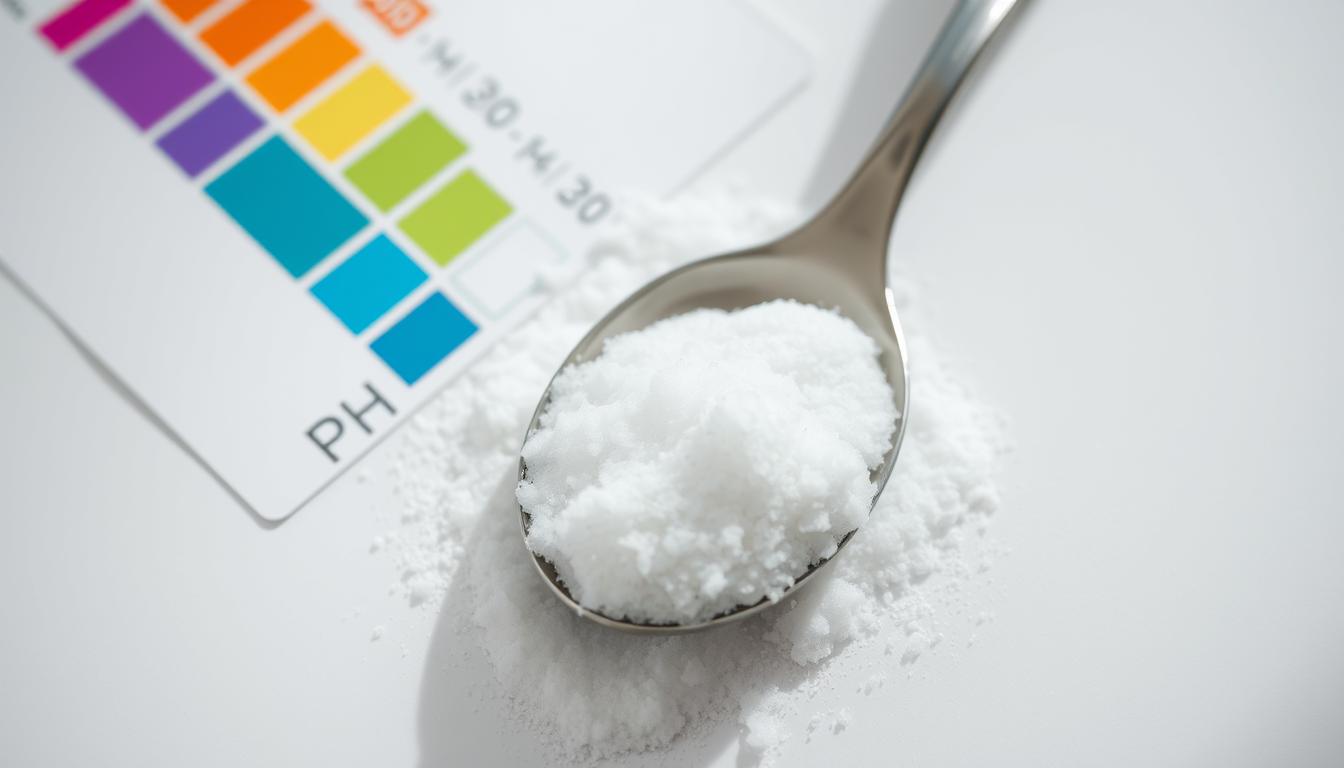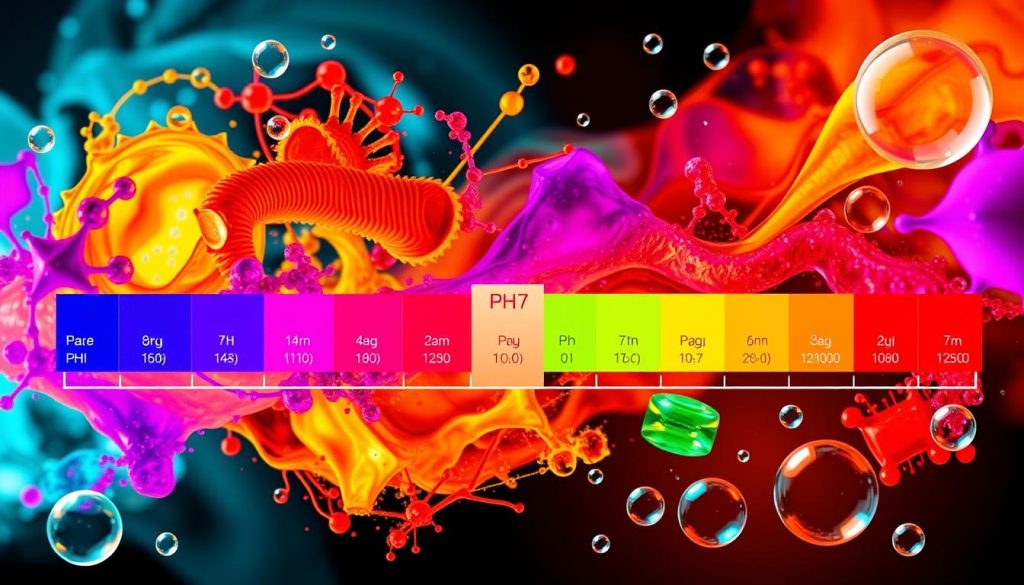
Baking soda, a common household item, has a pH level of 9. This fact places it on the alkaline side of the pH scale. The ranges from -1 to 15, with lower numbers showing acidity and higher numbers showing alkalinity.
Neutral substances, like pure water, have a pH of 7. Baking soda is also known as sodium bicarbonate. Its alkalinity makes it useful for many things.
Baking soda can be used for cooking, cleaning, and even some health issues. It reacts with acids, gets rid of smells, and helps with some health problems.
Let’s look at the science behind baking soda’s pH level. We’ll see how it helps us in our daily lives.
Understanding the pH Scale and Baking Soda’s Alkalinity
The pH scale measures acidity or alkalinity from 0 to 14. Neutral is 7, below is acidic, above is alkaline. Each unit change represents a tenfold difference in hydrogen ion concentration.
A pH 6 substance is ten times more acidic than one at pH 7. The scale is crucial for understanding chemical properties of substances.

Everyday items have different pH levels. Lemon juice is highly acidic at pH 2. Vinegar and soda are around pH 3. Wine and beer are slightly less acidic at pH 4.
Pure water is neutral at pH 7. Baking soda is alkaline at pH 8. Milk of Magnesia has a pH of 10. Ammonia and bleach are highly alkaline, ranging from pH 11 to 14.
The pH Scale: Measuring Acidity and Alkalinity
Most parts of the human body measure between 7.2 and 7.6 on the pH scale. Blood has a pH of 7.4, while stomach acid is highly acidic at pH 1-2.
Buffers like carbonic acid and bicarbonate anion maintain the body’s pH balance. The pH scale is vital in industries such as pool maintenance and cleaning.
Ideal pool pH is between 7.2 and 7.4, similar to the human body. Low pH can damage pool components. High pH can cause scaling and reduce chlorine effectiveness.
Baking Soda’s pH Level: A Mildly Alkaline Substance
Baking soda, or sodium bicarbonate, is mildly alkaline with a pH of 8. In water, it splits into sodium and bicarbonate ions, contributing to its alkaline properties.
Its alkalinity makes it useful for neutralizing stomach acid, cleaning, and cooking. Baking soda’s versatility comes from its composition and chemical properties.
| Substance | pH Level | Acidity/Alkalinity |
|---|---|---|
| Lemon Juice | 2.0 | Highly Acidic |
| Vinegar | 3.0 | Acidic |
| Pure Water | 7.0 | Neutral |
| Baking Soda | 8.0 | Mildly Alkaline |
| Milk of Magnesia | 10.0 | Alkaline |
| Household Bleach | 12.0 | Highly Alkaline |
Baking soda neutralizes acids, making it an effective antacid for heartburn and indigestion. Its mild abrasiveness and odor-neutralizing ability make it popular for cleaning surfaces.
It’s great for scrubbing and deodorizing various areas of the home. Baking soda’s alkalinity contributes to its many uses in daily life.
Baking Soda’s Alkalinity in Everyday Applications
Baking soda is a versatile household staple with many uses. It’s safe and effective for neutralizing stomach acid, cleaning, and kitchen experiments. About 2 million tons of baking soda are produced globally each year.
Neutralizing Stomach Acid and Providing Relief
Baking soda can help neutralize stomach acid when used correctly. It may ease discomfort from acid reflux or indigestion. Some studies suggest baking soda might have antibacterial properties too.
It could potentially help antibiotic therapy by changing how bacteria respond to antibiotics. Always talk to a doctor before using baking soda for medical reasons.
Baking Soda as a Safe and Effective Cleaning Agent
Baking soda’s alkalinity makes it great for cleaning various surfaces at home. It can neutralize odors and remove stains from carpets, fridges, and garbage cans. Placing baking soda in trash bins may cut garbage smells by up to 70%.
A simple solution of baking soda and warm water cleans kitchen appliances well. It’s gentle enough not to scratch surfaces. Baking soda is also useful for bathroom cleaning and laundry whitening.
Using Baking Soda in Kitchen Science Experiments
Baking soda reacts with mild acids like vinegar or citrus juices. This reaction is perfect for fun kitchen science experiments. The classic “volcano” experiment shows how baking soda and vinegar create foam.
These experiments offer hands-on learning about chemical reactions. They also show how versatile baking soda can be beyond cooking and cleaning.







